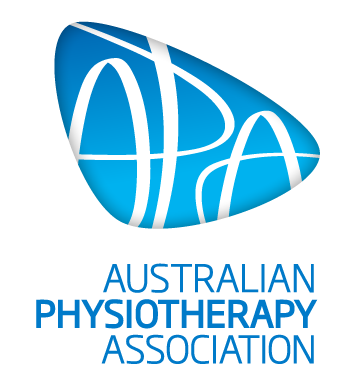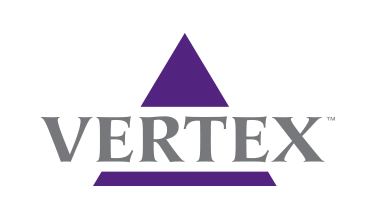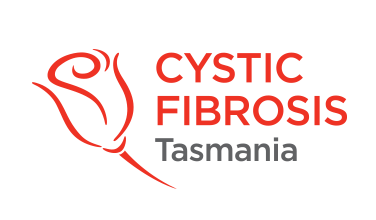MENU
Airway Clearance Sounds
Aerobika improving
Explanation & Coaching Tips
- Inspiratory pause before breathing out was present but not audible
- Good expiration phase, with a steady active airflow
Tips to improve or optimise the technique:
- Take a moderate volume breath in, pause with your glottis (back of throat open).
- Breathe out actively but not too forced.
- Your breath out should be longer than your breath in
- Complete a set of 12-15 breaths and then some relaxed breathing before huffing/cough, and repeat this cycle as per discussion with your physiotherapist
- Oscillatory PEP – CF Physio
Huff, no audible secretions
Explanation & Coaching Tips
- Good mid to high volume huff
- No secretions audible
Tips to improve or optimise the technique:
- Try huffs in different lung volumes, remember to only complete 2-3 huffs at each level resting in between with relaxed breathing
- Use a small breath in to target the smaller airways (low lung volume)
- Use a medium breath in (mid lung volume), use a larger breath in to find and move secretions that are closer towards your mouth.
- Work with your physiotherapist to help you master the breath out, this will need to change depending on what volume you are breathing from.
- Or you may consider returning to your airway clearance device/technique if there is no secretion movement after 2-3 huffs at the lower levels to get more air behind the secretions and shift more effectively
- Individuals with minimal secretions, and/or of stable health, may not have audible secretion movement, it is still important to check for secretions and “sweep” your airways. Work together with your physiotherapist to determine the best airway clearance technique and huffing routine for you
- Visit Forced Expiration Technique and Huffing – CF Physio for more information and to observe a huff.
Huff, too forced
Explanation & Coaching Tips
- First few breaths are effective with audible sounds of secretions moving towards the end of the huff
- On subsequent huffs the force increases a little too much, causing less secretion movement and more airway closure/wheezy sound
Tips to improve or optimise the technique:
- Relax, and use breathing control between huffs
- Be patient and try not to force sputum up
- Continue in low lung volume huffing, if necessary, with more gradual increase in volume as secretions move upwards, remember to use relaxed breathing after 2-3 huffs
- Keep upper chest and shoulders/neck relaxed
- Try to keep upper airway (glottis/back of the throat) open and relaxed by using one of the following
* Huffing into a huff tube, or reverse mouthpiece from airway clearance device to encourage an “O shaped” upper airway
* Using a tissue in front of the mouth and see if the tissue moves with the breath out – this helps demonstrate effective open glottis and airflow
- Listen for crackles (thought to indicate sputum movement) rather than wheeze which often indicates narrowed airways/turbulent airflow
- Try huffs in different lung volumes
- – use a small breath in to target the smaller airways (low lung volume),
- – use a medium breath in (mid lung volume), use a larger breath in to find and move secretions that are closer towards your mouth.
- Work with your physiotherapist to help you master the breath out, this will need to change depending on what volume you are breathing from.
- Or you may consider returning to your airway clearance device/technique if there is no secretion movement after 2-3 huffs at the lower levels to get more air behind the secretions and shift more effectively
- Individuals with minimal secretions, and/or of stable health, may not have audible secretion movement, it is still important to check for secretions and “sweep” your airways. Work together with your physiotherapist to determine the best airway clearance technique and huffing routine for you
- Visit Forced Expiration Technique and Huffing – CF Physio for more information and to observe a huff.
Low lung volume, too many huffs
Explanation & Coaching Tips
- Good attempt at huffing in lower lung volumes to begin with
- Audible movement of secretions towards the end of initial huffs
- Too many huffs in a row
- Huffing becomes too forceful and triggers airway closure
Tips to improve or optimise the technique:
- Relax, and use breathing control between huffs
- Be patient and try not to force sputum up
- Try to “find” where your secretions are sitting (listen and feel for the catch/crackle) in your airways first and begin huff at this level
- If no secretions felt or heard, continue in low lung volume huffing, if necessary, with more gradual increase in volume as secretions move upwards, remember to use relaxed breathing after 2-3 huffs
- Keep upper chest and shoulders/neck relaxed
- Try to keep upper airway (glottis/back of the throat) open and relaxed by using one of the following
* Huffing into a huff tube, or reverse mouthpiece from airway clearance device to encourage an “O shaped” upper airway
* Using a tissue in front of the mouth and see if the tissue moves with the breath out – this helps demonstrate effective open glottis and airflow
- Listen for crackles (thought to indicate sputum movement) rather than wheeze which often indicates narrowed airways/turbulent airflow
- Progress huffs in different lung volumes
- Breathe all the way out then * Use a small breath in to target the smaller airways (low lung volume),
- *Use a medium breath in (mid lung volume), use a larger breath in to find and move secretions that are closer towards your mouth.
- Work with your physiotherapist to help you master the breath out, this will need to change depending on what volume you are breathing from.
- Or you may consider returning to your airway clearance device/technique if there is no secretion movement after 2-3 huffs at the lower levels to get more air behind the secretions and shift more effectively
- Individuals with minimal secretions, and/or of stable health, may not have audible secretion movement, it is still important to check for secretions and “sweep” your airways. Work together with your physiotherapist to determine the best airway clearance technique and huffing routine for you
Visit Forced Expiration Technique and Huffing – CF Physio for more information and to observe a huff.
Staged huffs, incorrect
Explanation & Coaching Tips
- Too many huffs in a row
Tips to improve or optimise the technique:
- Start at a lower lung volume
- Initial breaths out at the lower lung volumes should be longer, more of an active expiration
- Squeeze the breath out in the lower lung volumes – “squeeze not a wheeze”
- Relax, and use breathing control between huffs
- Be patient and try not to force sputum up
- Keep upper chest and shoulders/neck relaxed
- Continue in low lung volume huffing, if necessary, with more gradual increase in volume as secretions move upwards, remember to use relaxed breathing after 2-3 huffs
- Try to keep upper airway (glottis/back of the throat) open and relaxed by using one of the following
* Huffing into a huff tube, or reverse mouthpiece from airway clearance device to encourage an “O shaped” upper airway
* Using a tissue in front of the mouth and see if the tissue moves with the breath out – this helps demonstrate effective open glottis and airflow
- Listen for crackles (thought to indicate sputum movement) rather than wheeze which often indicates narrowed airways/turbulent airflow
- Progress huffs at different lung volumes
- * Use a small breath in to target the smaller airways (low lung volume),
- * Use a medium breath in (mid lung volume), use a larger breath in to find and move secretions that are closer towards your mouth.
- Work with your physiotherapist to help you master the breath out, this will need to change depending on what volume you are breathing from.
- Or you may consider returning to your airway clearance device/technique if there is no secretion movement after 2-3 huffs at the lower levels to get more air behind the secretions and shift more effectively
- Individuals with minimal secretions, and/or of stable health, may not have audible secretion movement, it is still important to check for secretions and “sweep” your airways. Work together with your physiotherapist to determine the best airway clearance technique and huffing routine for you
Visit Forced Expiration Technique and Huffing – CF Physio for more information and to observe a huff.
Staged huff, with sputum
Explanation & Coaching Tips
Effective low to mid volume huffs with copious secretions moving on the expiration (breath out) phase.
Effective clearance.
Might consider more of a pause after 2-3 huffs then moving up to the larger volumes to collect more volume of secretions before the final cough.
Staged huff, well done
Explanation & Coaching Tips
Low to mid volume huff with secretions audible; listen for the squeezing of the secretions with effective movement.
Larger volume huff at the end prior to coughing to ensure the cough is more effective in the final movement of the secretions.









